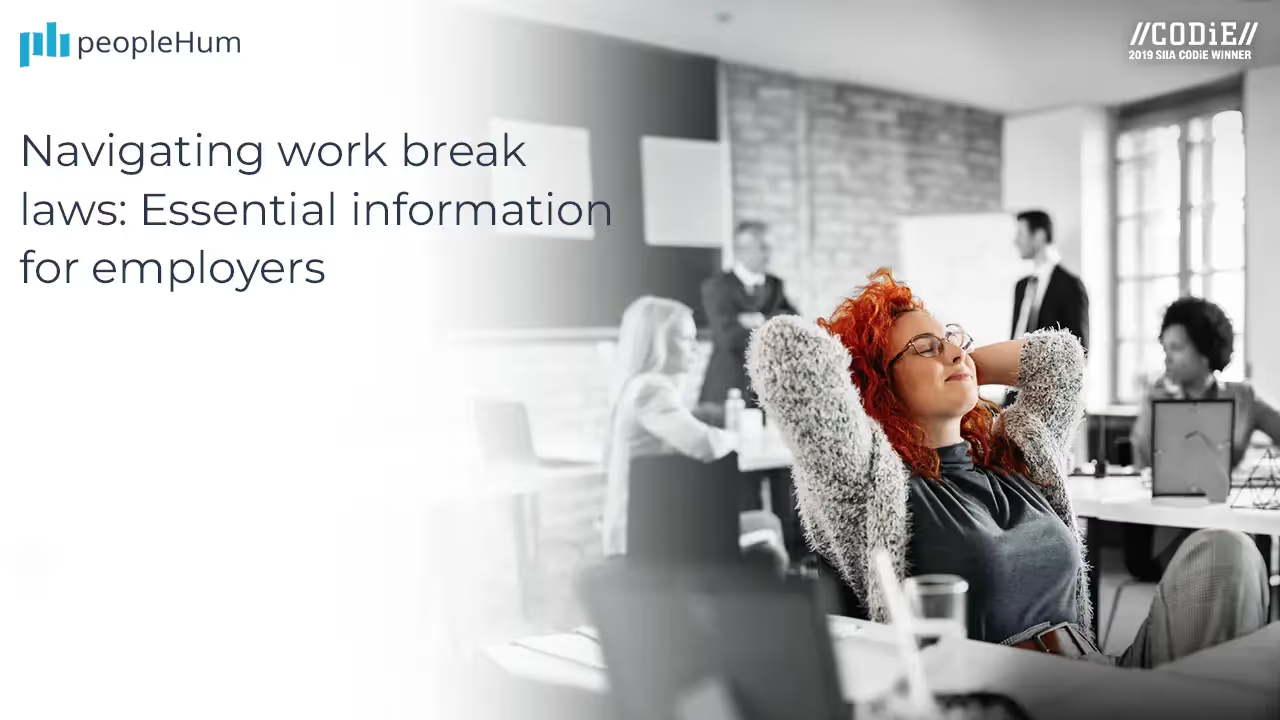It's a busy Tuesday afternoon, and your employees have been working hard, heads down, cranking through tasks. But suddenly, you notice that some are skipping their lunch breaks, while others are pushing through long hours without even taking a breather. Maybe you’re tempted to think, “Great! Productivity is up.” But here’s the thing—when employees don’t take breaks, it’s not just their well-being that suffers, it’s your business too.
Understanding work break laws isn’t just a legal checkbox. It’s about creating a healthier, more productive workplace. So, whether you're running a startup or managing a seasoned team, let’s dive into the crucial information every employer needs to know about work break laws.
Why Breaks Matter More Than You Think
You might be wondering—how important can a 15-minute break or a 30-minute lunch really be? The answer? It’s critical. A study by Tork found that 90% of North American employees said taking a break helped them feel more refreshed and productive when they returned to work. Yet, nearly 39% of employees feel pressured to skip their breaks, either due to workplace culture or workload. And that’s where employers need to step in.
Breaks aren’t just a matter of giving employees a breather—they’re a legal requirement in many regions, and failing to provide them can lead to costly violations.
The Basics: What Are Employers Required to Provide?
Work break laws vary depending on the country, state, or even the type of work. But generally, they cover two main types of breaks: rest breaks and meal breaks.
- Rest Breaks: These are typically shorter breaks (10-20 minutes) designed to give employees a quick recharge during their workday. In the U.S., federal law requires rest breaks to be paid if they are under 20 minutes. In the European Union, employees are entitled to a 20-minute break after working six hours straight. These breaks are crucial for maintaining focus and preventing burnout.
- Meal Breaks: Longer breaks, usually 30 minutes to an hour, often for lunch or a more extended rest. In the U.S., meal breaks are typically unpaid if they last more than 30 minutes, but some states, like California, are stricter. There, employers must provide a 30-minute meal break after five hours of work and a second break after 10 hours. Failing to comply with these laws can lead to hefty penalties.
The Hidden Cost of Ignoring Break Laws
As an employer, providing breaks isn’t just about following the law—it’s about maintaining a healthy, productive workforce. Skipping breaks can lead to burnout, reduced productivity, and higher turnover. And let’s not forget the legal consequences. In California, for instance, if an employee doesn’t receive their legally mandated meal or rest break, the employer owes them an extra hour of pay for each day the violation occurs.
But it’s not just about avoiding fines. Studies show that employees who take regular breaks are more engaged and motivated. The Harvard Business Review found that employees who take breaks are more creative, focused, and productive than those who don’t. So, if you’re thinking breaks are an interruption in the workflow, think again—they might be the key to unlocking better performance.
Common Pitfalls: Where Employers Often Get It Wrong
Let’s talk about the common mistakes employers make when it comes to work breaks. It’s easy to assume that letting employees choose their own break times is enough, but here’s where things get tricky:
- Not Scheduling Breaks: Some employers think it’s fine to let employees take breaks at their discretion. While flexibility is great, you also need to ensure that employees are actually taking their legally entitled breaks. Failing to schedule these breaks can lead to unintentional violations.
- Skipping Breaks in a Crunch: During busy periods, it’s tempting to push through and delay breaks. But no matter how hectic things get, breaks should remain non-negotiable. In states like California, employers are legally required to ensure breaks are taken on time, and failing to do so can lead to back pay and penalties.
- Unclear Policies: If your break policy is buried in the employee handbook or communicated through vague verbal agreements, it’s time to update. Clear, written break policies that outline both employer and employee responsibilities are essential for compliance.
How to Ensure Compliance (Without Killing Productivity)
You’re probably wondering, how can I ensure compliance without turning into the "break police"? Here are a few simple strategies:
- Set Clear Policies: Make sure your employees know their rights and responsibilities regarding breaks. A clear, well-communicated policy helps avoid confusion and ensures compliance.
- Track Breaks Effectively: Use software to track when employees take breaks. This doesn’t have to be a rigid system—simple timekeeping tools can ensure everyone’s getting their required rest without micromanaging.
- Encourage a Break-Friendly Culture: Sometimes, employees skip breaks because they feel pressured to keep working. Foster a workplace culture where taking breaks is encouraged and seen as a way to recharge, not a sign of slacking.
- Educate Your Management Team: Ensure your managers understand the importance of breaks and how to enforce break policies fairly. They’re your frontline in making sure breaks are taken and compliance is maintained.
Wrapping It Up
At the end of the day, work breaks aren’t just about following legal requirements—they’re about fostering a culture of balance, well-being, and productivity. As Charles Dickens once wrote, “Restlessness is discontent—and discontent is the first necessity of progress.” Breaks are that pause, the calm before employees return to work refreshed, engaged, and ready to perform at their best.
So, make sure your team is taking the time they need. Not only will it keep you compliant with the law, but it’ll also create a happier, healthier workforce. If you’re looking for ways to create fair, break-compliant policies, peopleHum is here to help. Together, we can ensure your workplace not only follows the law but thrives because of it.















































